Employee training is key to productivity and growth, and in 2025, video training platforms lead the way. This blog explores the best tools for effective employee learning, categorized into Video Content Management Systems, Learning Management Systems, Microlearning Platforms, and Team Collaboration Tools. With the rise of remote work, platforms like VIDIZMO EnterpriseTube stand out for interactive, secure, and scalable video training. Discover how these tools enhance engagement, knowledge retention, and organizational success.
Employee training is a critical factor in organizational success, driving productivity, engagement, and skill development. In 2025, the demand for employee training tools has surged, fueled by the continued rise of remote work and the need for flexible, scalable learning solutions. As Jack Welch famously said, “An organization’s ability to learn and translate that learning into action rapidly is the ultimate competitive advantage.”
The rapid shift to digital workplaces has accelerated the adoption of video training platforms, making it easier for organizations to deliver interactive and engaging learning experiences. Forrester’s research reveals that 75% of employees prefer to watch a video rather than read an article, document, or lengthy training material. Video-based learning also increases retention by 35% due to its audio-visual capabilities. Additionally, the Ebbinghaus forgetting curve shows that learners forget 90% of new information within a week if it isn’t reinforced, highlighting the importance of microlearning platforms that deliver short, focused lessons to enhance knowledge retention.
With 93% of businesses worldwide planning to adopt eLearning solutions by the end of 2025, choosing the right video training tools has become crucial for staying competitive. From video content management systems to learning management systems (LMS), microlearning platforms, and team collaboration tools, the variety of solutions available today caters to every organization’s unique training needs.
In this blog, we’ll explore the top employee training tools for 2025, categorized into four main groups: Video Content Management Systems, Learning Management Systems, Microlearning Platforms, and Team Collaboration Tools. Whether you need to create engaging video content, deliver real-time training sessions, or enhance knowledge retention with bite-sized learning, this guide will help you choose the best tools to achieve your organizational goals. Let’s dive into the most effective video training and management tools for 2025.
.png?width=800&name=benefits%20(1).png)
With the number of options in video training tools available in the market today, from beginner’s to advanced levels, for creating, recording & managing employee training videos, the training process has become much easier.
In addition, you can also use proper process documentation for a more organized strategy.
In this blog, we’ll discuss training tools for employees that can help organizations conduct & record employee training in a better way. For your convenience, we've split it into 4 broad categories. We have got a list of the best tools for recording training videos, tools to create training material & to improve the team's productivity & collaboration.
Let’s have a look at video training & management tools first.
Video Content Management Systems
Video Content Management Systems (VCMS) are platforms designed to store, manage, organize, and deliver video content securely and efficiently. They are widely used in corporate environments for employee training, onboarding, compliance training, and knowledge sharing. VCMS platforms support both live streaming and on-demand video hosting, enabling organizations to deliver synchronous and asynchronous learning experiences.
According to Forrester’s research, 75% of employees prefer to watch a video rather than read an article or lengthy training document. Additionally, video-based learning increases retention by 35% due to its audio-visual capabilities. In 2025, the need for secure, scalable, and interactive video training solutions continues to grow as more organizations adopt remote and hybrid work environments.
Why Video Content Management Systems are Essential in 2025
In today’s digital workplace, employees expect on-demand access to training content, personalized learning experiences, and interactive video sessions. VCMS platforms enable organizations to:
- Centralize Video Content: Store and manage all training videos in a secure, centralized platform, making it easy to organize and access video content.
- Deliver Interactive Learning Experiences: Use quizzes, polls, surveys, and in-video annotations to create engaging and interactive video experiences.
- Enable Secure Access and Compliance: Ensure data privacy and security with advanced security features like SSO integration, end-to-end encryption, and role-based access controls.
- Track Learning Progress: Use advanced analytics to measure video engagement, quiz performance, and learning outcomes.
- Support Flexible Learning Models: Provide live streaming for synchronous learning and on-demand video hosting for asynchronous training.
Key Features of Video Content Management Systems
An effective Video Content Management System should offer a comprehensive set of features to support modern learning environments:
1. Live Streaming and On-Demand Video Hosting
- Live Streaming: Conduct real-time training sessions, webinars, and virtual events, ensuring high-quality streaming with adaptive bitrate technology.
- On-Demand Video Hosting: Store and organize training videos for self-paced, asynchronous learning. This supports a flexible learning environment, catering to remote and hybrid teams.
2. Interactive Video Tools
- Quizzes and Polls: Test knowledge retention and gather feedback through in-video quizzes and polls.
- In-Video Annotations and Notes: Enhance engagement with interactive annotations and notes, helping learners retain key points.
- Surveys and Feedback Forms: Collect valuable feedback to improve training content and the overall learning experience.
3. AI-Powered Video Indexing and Search
- Automatic Transcription and Translation: Automatically transcribe video content and translate it into multiple languages for global audiences.
- Facial Recognition and Object Detection: Leverage AI-powered facial recognition and object detection to create searchable video content.
- Smart Search Capabilities: Enable users to find relevant video segments using keyword search, tags, spoken words, and on-screen text.
4. Advanced Analytics and Reporting
- Engagement Tracking: Monitor viewer engagement, watch time, and video completion rates to measure learning effectiveness.
- Quiz and Performance Analytics: Track quiz scores and performance metrics to evaluate learner progress.
- Content Usage Reports: Analyze content usage patterns to optimize training programs and improve ROI.
5. Security and Compliance
- Single Sign-On (SSO) Integration: Secure user authentication through SSO with SCIM support for seamless access management.
- Role-Based Access Controls: Assign specific roles and permissions to users, ensuring only authorized personnel can access or manage sensitive content.
- End-to-End Encryption: Protect video content during storage and transmission with advanced encryption protocols.
- Compliance with Industry Standards: Ensure compliance with global security standards such as HIPAA, GDPR, SOC 2, and FERPA for data protection.
6. Integration and Compatibility
- LMS Integration: Integrate with Learning Management Systems (LMS) such as Moodle, Canvas, Blackboard, and SAP Litmos for a cohesive learning experience.
- Video Conferencing Integration: Seamlessly integrate with video conferencing tools like Zoom, Microsoft Teams, and WebEx to ingest recorded meetings.
- API Integration and Customization: Offer API integration for custom solutions and personalized learning paths.
7. Deployment Flexibility and Scalability
- Cloud-Based Deployment: Scale quickly with cloud-based solutions for remote and hybrid teams.
- On-Premise Deployment: Maintain full control over data with on-premise deployment, ideal for organizations with strict compliance requirements.
- Hybrid Deployment Models: Combine cloud and on-premise infrastructure for maximum flexibility and data security.
Best Use Cases for Video Content Management Systems
- Onboarding and Orientation: Streamline the onboarding process by delivering interactive training videos to new hires, reducing time-to-productivity.
- Compliance Training: Ensure regulatory compliance by providing secure, trackable compliance training programs.
- Sales Training and Enablement: Train sales teams on product knowledge, sales techniques, and competitive analysis through interactive video modules.
- Continuous Professional Development: Enable employees to acquire new skills and certifications through self-paced learning and professional development courses.
- Leadership and Soft Skills Training: Develop leadership skills, communication techniques, and emotional intelligence through scenario-based video training.
- Knowledge Sharing and Collaboration: Facilitate knowledge sharing by creating a centralized video repository for company-wide collaboration and learning.
VIDIZMO EnterpriseTube
If you’re a large organization looking to store, manage & record your employee training videos in a secure portal, then VIDIZMO is the right option.
Have you ever thought of having your own YouTube-like portal for video training?
VIDIZMO EnterpriseTube offers a YouTube-like video learning platform where you can easily upload and stream videos for training and learning. Whether you are giving training live or recording it to be viewed as an on-demand video later, VIDIZMO lets your organization do it all. You can also stream to both external and internal audiences.
You can create a self-paced and real-time learning and training experience for your greatest asset, Employees!
Make your videos interactive and engaging using quizzes and surveys. Integrate with web conferencing tools, or embed videos in your LMS or CMS.
Segregate content within separate groups or entirely independent video portals in terms of courses or for different departments. Be sure to categorize, auto-tag, and feature important videos and playlists in your online video content library.
 This corporate tool also lets you define access to your training videos, where for every video, you can select which users or groups can view it. Furthermore, you can also restrict access and set it up for the users within the organization only, therefore, saving it from unauthorized access.
This corporate tool also lets you define access to your training videos, where for every video, you can select which users or groups can view it. Furthermore, you can also restrict access and set it up for the users within the organization only, therefore, saving it from unauthorized access.
Or save your effort, connect VIDIZMO with your IAM (identity and access management) service to authenticate users through SSO integration with SCIM support.
To put it into perspective, if you connect your Azure AD with VIDIZMO, all your users and groups automatically into VIDIZMO with pre-defined roles. User and group provisioning allow their data to be automatically updated as you make changes in your Azure AD.
The US Department of State Uses VIDIZMO to Stream Live Video Internally – Read More on This Story
Zoom
Next on our list of employee training tools is Zoom. More like a video conferencing tool that has skyrocketed during the pandemic.

You can run real-time one-on-one or small group training sessions, perform live demos, screen share, and raise your hand if you have queries.
However, platforms like Zoom are great for live training sessions, but reusing these recorded training sessions is next to impossible on Zoom alone, especially if you want to keep them private and secure. In that case, you can integrate your Zoom or other online meeting solutions with VIDIZMO to have your recordings auto-ingested, secured and used as reusable training assets.
The corporate training for the employees using Zoom can be a simple option but not as effective as an enterprise video platform supporting asynchronous training
Learning Management Systems
LMS is intended to assist a person in creating, overseeing, and giving online courses and projects to learn. It gives the employees and employer a stage to acquire and feature their abilities anywhere and at whatever point they need according to their comfort. LMS is mostly used in educational sectors, but you can also use them as corporate training tools.
As LMS itself is not designed to stream and manage videos, you can also integrate your LMS with your video content management platform like VIDIZMO. Here are a few LMS that you can use as an employee training tool
Moodle
Moodle is a free and open-source e-learning platform with various educators, courses and curricula.
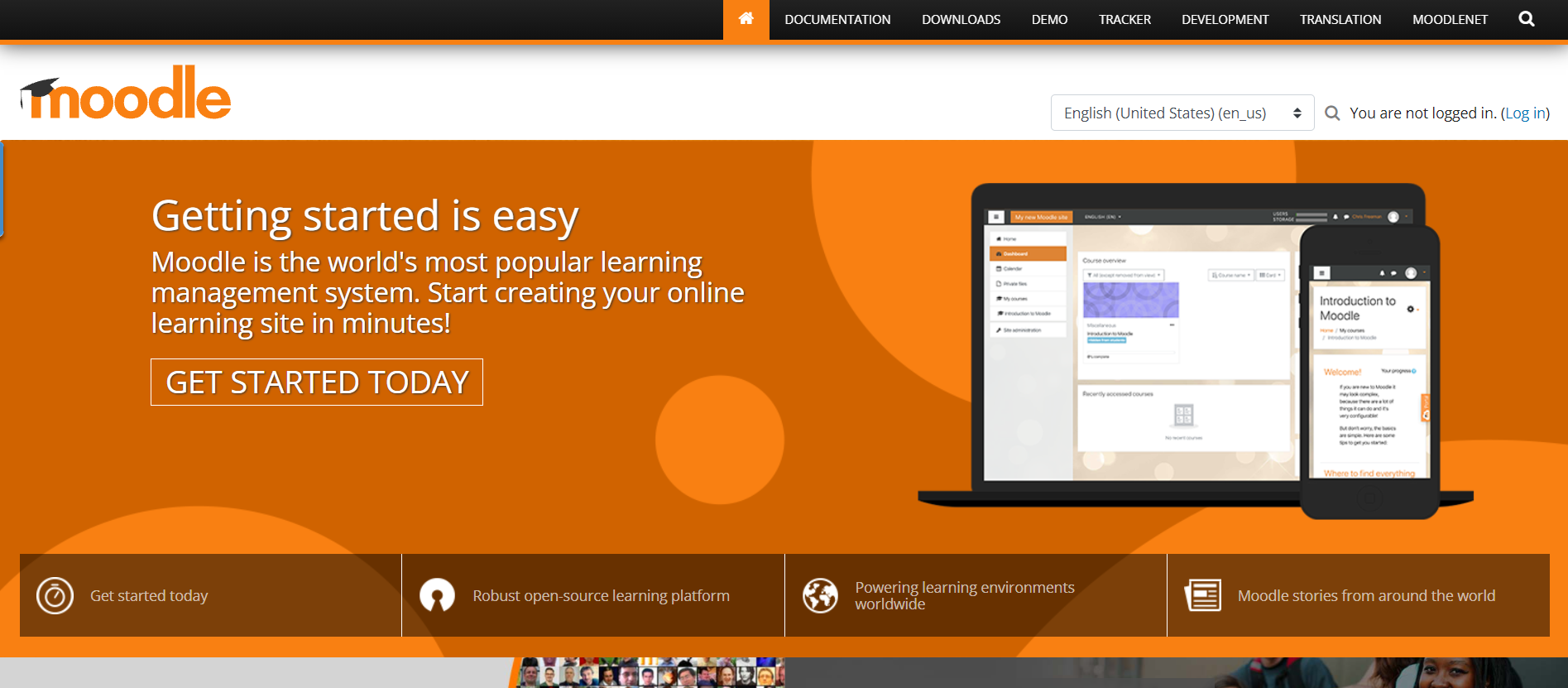
While Moodle has standard features like any other e-learning platform, it also has certain plug-in options. Common features include chats, blogs, database activities, glossaries, and more for the corporate environment.
Blackboard
Blackboard is a customizable online learning platform. It was mainly for higher education, but in 2005, it expanded throughout the corporate sectors.
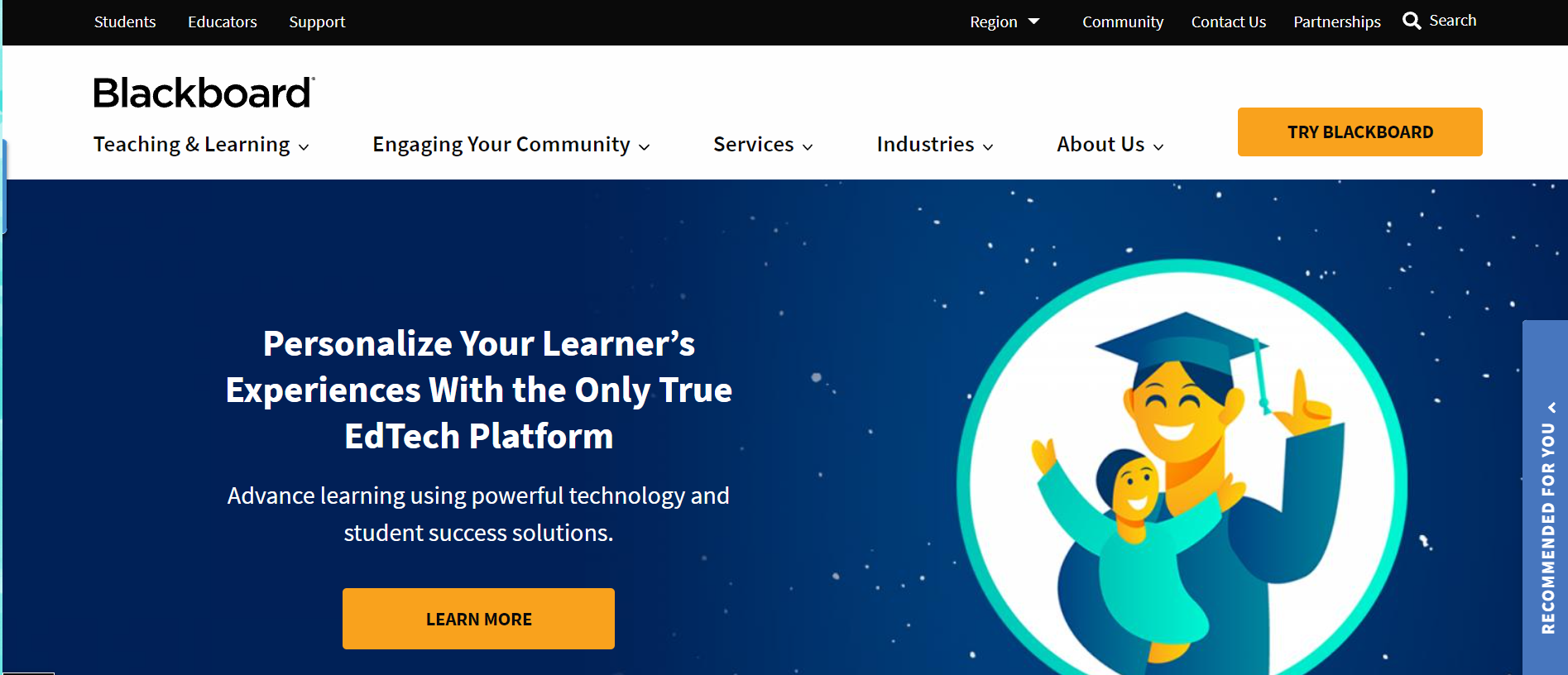
It is one of the increasingly common platforms where flexible training, learning and professional development are the main focus.
It facilitates corporate processes such as onboarding, sales training, leadership development and customer training.
Learn why LMS is not enough for video learning needs
ProProfs Training Maker
ProProfs Training Maker is an incredibly user-friendly cloud LMS. You can use the platform to create, design, share, and track custom online training courses and tests.

Users get access to a course library, virtual classroom, quizzes, collaboration tool, and reporting as a part of the package. The solution is used by 15+ million users in over 150 countries.
Micro-Learning Platforms
Microlearning platforms, in a nutshell, provide bite-sized chunks of information that are fun to consume. The fun part behind microlearning platforms is the content that is easy to create and quick to edit.
The interactive tools within these platforms are helpful in terms of training new employees and improving collaboration, increasing technical knowledge or helping train remote teams.
Learning quickly and efficiently in a flexible environment can make all the difference in this fast-paced era. You have various microlearning training tools for remote teams, newly hired and any other individual that needs to learn at their own pace.
With the rise of just-in-time (JIT) learning, mobiles are best for bite-sized training. These platforms include TalentCards, Qstream, Axonify and others.
Apart from employee training tools, here are a few softwares that can help in creating training videos & materials. These tools can also help in increasing employees’ productivity.
Content Creation Tools
You must have seen different types of content made through different content creation tools. This helps creates learning materials such as employee training videos, infographics, images, slides, and plans. Here are some of the most easy-to-use content creation tools.
Canva
Canva is a design platform that is super easy to use with tools that even a non-tech-savvy person can use.
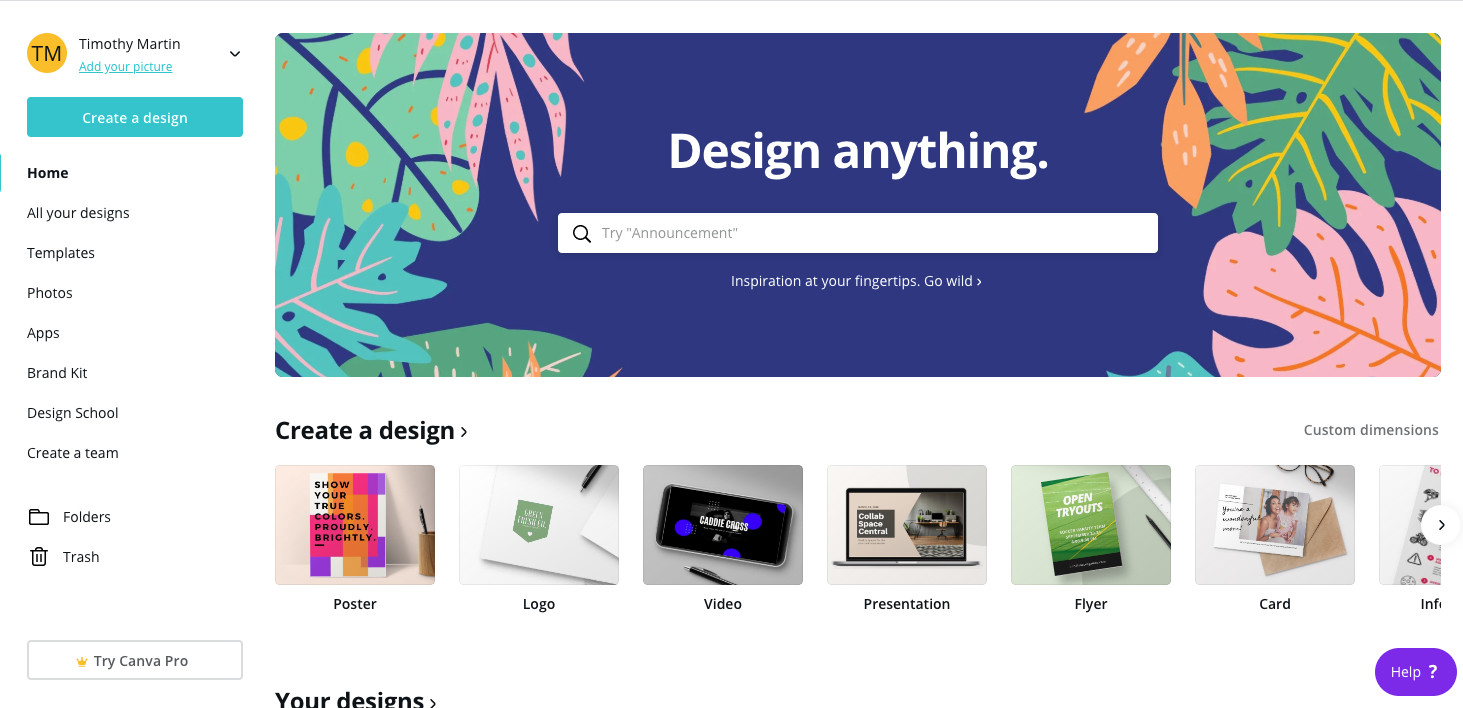
It is used to make different visuals, posts, graphics and capture static screenshots and screen interaction sequences to develop systems, training guides, manuals, etc.
Despite being used for many other reasons, it’s not a bad option for creating training content. Choose from their template or start from scratch.
Wistia
Wistia is often used for marketing use cases and hosting videos such as on-demand video learning content. However, it is simple and lacks extensive features compared to others.

With the tools provided by Wistia, you can screen record your screen for a more interactive training session and shoot and edit your videos simultaneously.
Team Collaboration Tools
Another one of the corporate training tool categories includes team collaboration tools. As Mike Krzyzewski said, “Effective teamwork begins with communication,” and rightfully so because the instructors and learners need to communicate and share their knowledge. It is a common example of soft skills in the organization.
For instance, design teams, managers and developers need communication to produce high-quality content. Communication is key in every step of the training process.
Slack
Slack is a popular communication tool like a chat room to replace emails as the primary means of communication and sharing for the whole organization.
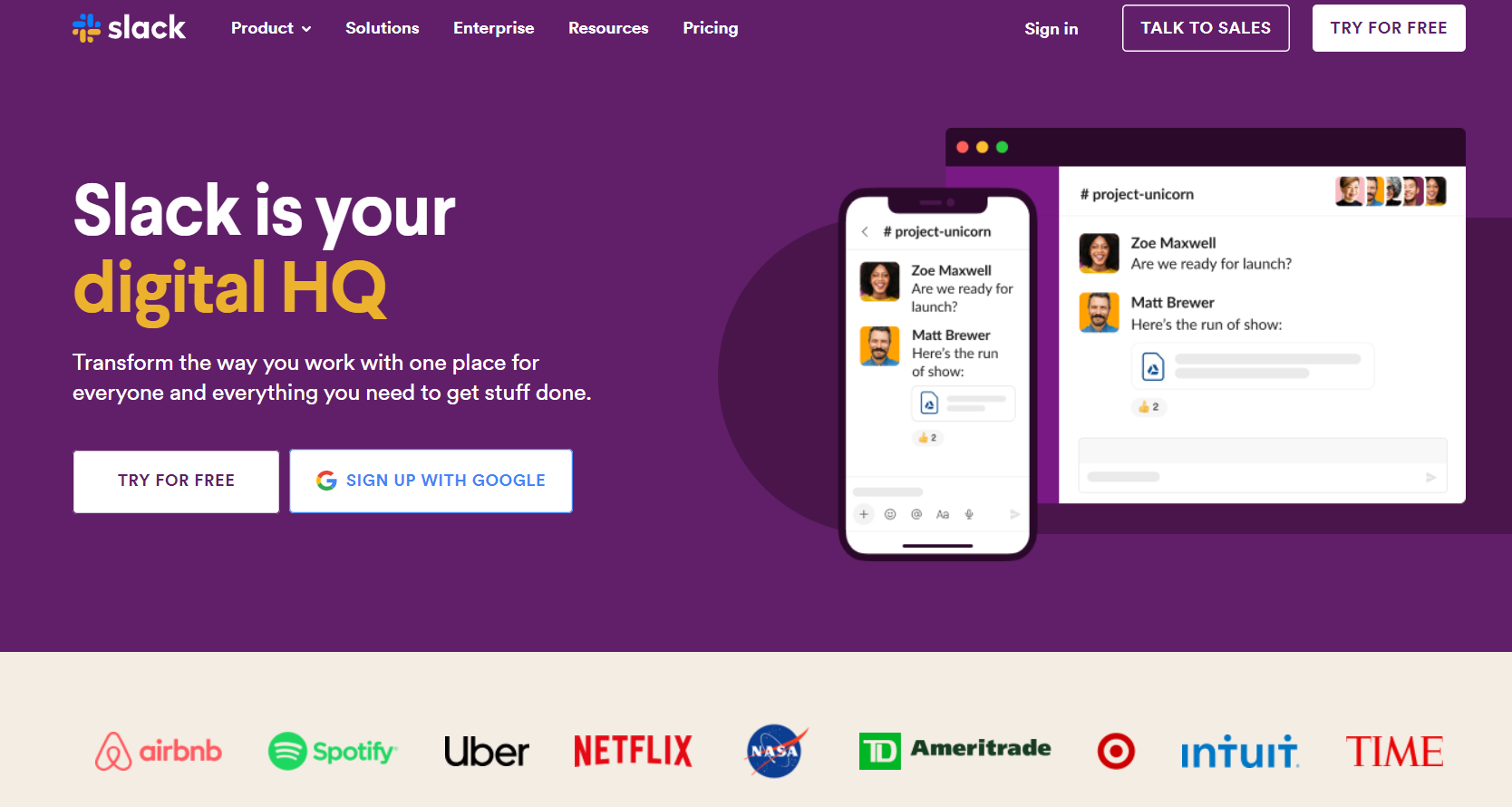
Quick, easy, simple and targeted communication tool has over 8 million daily active users. If you are participating remotely slack makes it easy by creating channels and communicating privately.
HubSpot
If you want to be advanced and efficient in team communication or reduce admin work, you can opt for HubSpot to organize surveys and emails.
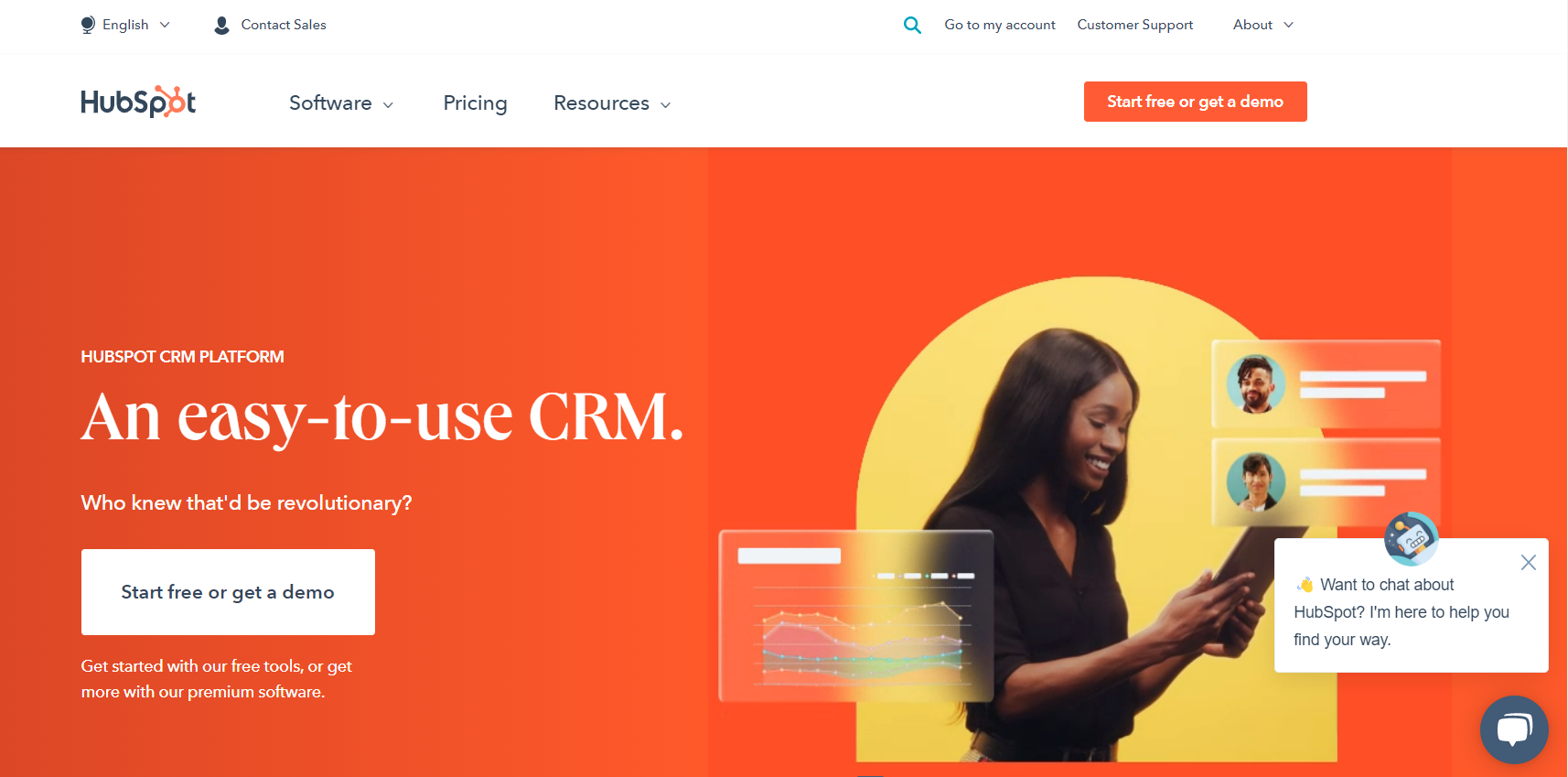
It is an all-in-one tool for team collaboration & marketing as well. You can schedule or send an automated reply to a group of workers to remind them to enroll in a course or a workshop.
Read More | 7 Must-Have Remote Working Technologies
On-boarding Tools
These are tools that help you develop interactive "How-to" guides to help employees understand how to use different software. These are recommended if your organization uses a lof of software and tools. These can be best explained by the example of Scribe below:
Scribe
As your ever-increasing remote workforce expands, streamline your processes with instant how-to documentation. Scribe is both a browser extension and desktop application that turns any process into a step-by-step guide.

All you need to do is click “Record” and conduct business as usual. Scribe will instantly capture each action you take, then produce a list with instructions and screenshots for each step.
Once complete, share or embed your Scribe into any CMS or knowledge base for seamless cross-training and collaboration. Marketing teams can both save time and strengthen the skill set of every single team member. Some clear advantages of using Scribe are:
Final Insights and Recommendations
Employee training has evolved significantly in 2025, driven by the need for flexible, scalable, and engaging learning solutions that cater to remote and hybrid work environments. With 93% of businesses worldwide planning to adopt eLearning solutions, the importance of choosing the right employee training tools cannot be overstated.
This blog explored the top employee training tools categorized into four main groups: Video Content Management Systems (VCMS), Learning Management Systems (LMS), Microlearning Platforms, and Team Collaboration Tools. These tools not only enhance knowledge retention and engagement but also provide organizations with the flexibility to deliver synchronous and asynchronous learning experiences.
- Video Content Management Systems (VCMS) like VIDIZMO EnterpriseTube empower organizations to store, manage, and deliver secure video content with interactive features, AI-powered indexing, and advanced analytics. They are ideal for corporate training, onboarding, compliance training, and continuous professional development.
- Learning Management Systems (LMS) provide a structured approach to delivering online courses, assessments, and certifications, ensuring a cohesive learning experience.
- Microlearning Platforms deliver bite-sized training content designed to improve knowledge retention and engagement. With short, focused lessons, they cater to modern learners who prefer on-demand, mobile-friendly training.
- Team Collaboration Tools like Slack and HubSpot enhance communication, teamwork, and productivity, ensuring effective knowledge sharing and collaboration in remote and distributed teams.
Why Video Training Platforms are Crucial in 2025
The rise of remote work and digital transformation has changed how organizations approach employee training. Video training platforms offer several advantages, including:
- Increased Knowledge Retention: Research shows that 75% of employees prefer to watch a video rather than read text-based content, and video-based learning increases retention by 35%.
- Flexible Learning Models: Support for both synchronous and asynchronous learning, catering to diverse learning preferences and schedules.
- Enhanced Engagement and Interactivity: Interactive tools like quizzes, surveys, and in-video annotations transform passive viewing into active learning experiences.
- Scalable and Secure Solutions: VCMS platforms provide enterprise-grade security, SSO integration, role-based access controls, and compliance with industry standards like HIPAA, GDPR, and FERPA.
Final Thoughts
Choosing the right mix of employee training tools can significantly impact productivity, engagement, and knowledge retention. By leveraging video training platforms, LMS, microlearning tools, and team collaboration solutions, organizations can create a holistic learning ecosystem that empowers employees to learn at their own pace, develop new skills, and grow within the organization.
Ready to transform your employee training strategy? Try VIDIZMO EnterpriseTube by signing up for a free trialor contact us to discover how our video training platform can enhance your organization’s learning experience in 2025. Embrace the future of learning with the best employee training tools and gain a competitive edge in today’s dynamic business world.
The best employee training tools for 2025 include a mix of Video Content Management Systems (VCMS), Learning Management Systems (LMS), Microlearning Platforms, and Team Collaboration Tools. VIDIZMO EnterpriseTube is highly recommended for secure video training, while platforms like Moodle and Blackboard are ideal for structured course delivery. TalentCards and Axonify are great for microlearning, and Slack and HubSpot enhance team collaboration.
Video training platforms are crucial for employee training because they provide interactive learning experiences, flexible on-demand access, and increased engagement through quizzes, surveys, and in-video annotations. Research shows that 75% of employees prefer watching videos over reading text-based content, and video-based learning increases retention by 35%.
Video Content Management Systems (VCMS) are platforms that store, manage, and deliver video content securely and efficiently. They support both live streaming and on-demand video hosting, making them ideal for synchronous and asynchronous learning. Examples include VIDIZMO EnterpriseTube and Panopto, which offer AI-powered indexing, interactive tools, and enterprise-grade security.
Microlearning platforms enhance employee training by delivering short, focused lessons that improve knowledge retention and engagement. They support bite-sized training content that fits into busy work schedules, catering to modern learners who prefer on-demand and mobile-friendly training. Platforms like TalentCards, Qstream, and Axonify use gamification and interactive quizzes to enhance learning experiences.
Learning Management Systems (LMS) offer a structured approach to online course delivery, assessments, and certifications. They provide a cohesive learning environment with features like course management, customization, and reporting tools. Integrating an LMS with a Video Content Management System enhances video delivery, engagement tracking, and compliance management.
Yes, video training platforms significantly improve knowledge retention. According to Forrester’s research, video-based learning increases retention by 35% due to its audio-visual capabilities. Additionally, the Ebbinghaus forgetting curve shows that learners forget 90% of new information within a week if it isn’t reinforced. Short microlearning video lessons help combat this by presenting information in manageable segments.
A secure video training platform should include SSO integration for secure login, end-to-end encryption for content protection, role-based access controls to restrict unauthorized access, and compliance with regulations like HIPAA, GDPR, and FERPA. Platforms like VIDIZMO EnterpriseTube offer enterprise-grade security and customizable role-based permissions.
For remote and hybrid teams, the best video platforms include VIDIZMO EnterpriseTube for secure video training and Zoom for real-time virtual meetings. TalentCards and Axonify are ideal for mobile-friendly microlearning, while Slack and Microsoft Teams enhance team collaboration and communication.
Video training platforms support asynchronous learning by providing on-demand video hosting, allowing employees to learn at their own pace. They also offer interactive tools like quizzes, in-video annotations, and personalized learning paths. Platforms like VIDIZMO EnterpriseTube and Panopto allow organizations to create self-paced training experiences with advanced analytics and reporting.
Yes, there are free employee training tools available, although they may have limited features compared to premium solutions. Moodle is a popular open-source LMS that offers customizable course management. Canva is great for creating training materials and visuals, while Google Classroom is useful for basic online course delivery. However, for advanced features like interactive video training and secure content management, paid solutions like VIDIZMO EnterpriseTube are recommended.

.png?width=800&name=benefits%20(1).png)
 This corporate tool also lets you define access to your training videos, where for every video, you can select which users or groups can view it. Furthermore, you can also restrict access and set it up for the users within the organization only, therefore, saving it from unauthorized access.
This corporate tool also lets you define access to your training videos, where for every video, you can select which users or groups can view it. Furthermore, you can also restrict access and set it up for the users within the organization only, therefore, saving it from unauthorized access.













Comments (2)